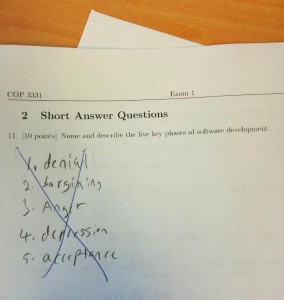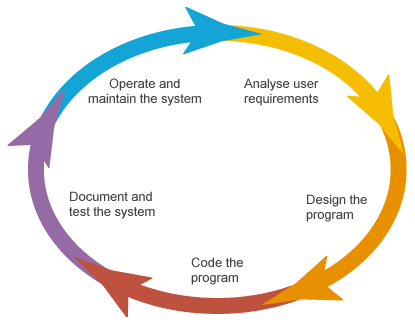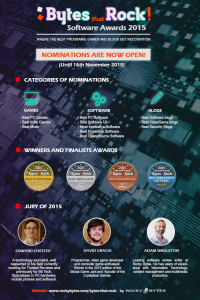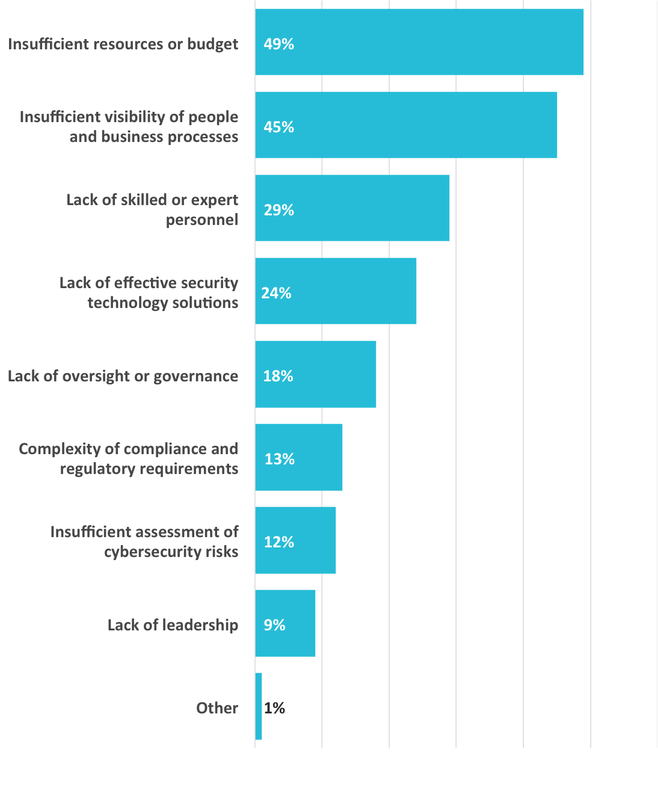The Architecture of Open Source Applications
From the webpage:
Architects look at thousands of buildings during their training, and study critiques of those buildings written by masters. In contrast, most software developers only ever get to know a handful of large programs well—usually programs they wrote themselves—and never study the great programs of history. As a result, they repeat one another’s mistakes rather than building on one another’s successes.
Our goal is to change that. In these two books, the authors of four dozen open source applications explain how their software is structured, and why. What are each program’s major components? How do they interact? And what did their builders learn during their development? In answering these questions, the contributors to these books provide unique insights into how they think.
If you are a junior developer, and want to learn how your more experienced colleagues think, these books are the place to start. If you are an intermediate or senior developer, and want to see how your peers have solved hard design problems, these books can help you too.
Follow us on our blog at http://aosabook.org/blog/, or on Twitter at @aosabook and using the #aosa hashtag.
I happened upon these four books because of a tweet that mentioned: Early Access Release of Allison Kaptur’s “A Python Interpreter Written in Python” Chapter, which I found to be the tenth chapter of “500 Lines.”
OK, but what the hell is “500 Lines?” Poking around a bit I found The Architecture of Open Source Applications.
Which is the source for the material I quote above.
Do you learn from example?
Let me give you the flavor of three of the completed volumes and the “500 Lines” that is in progress:
The Architecture of Open Source Applications: Elegance, Evolution, and a Few Fearless Hacks (vol. 1), from the introduction:
Carpentry is an exacting craft, and people can spend their entire lives learning how to do it well. But carpentry is not architecture: if we step back from pitch boards and miter joints, buildings as a whole must be designed, and doing that is as much an art as it is a craft or science.
Programming is also an exacting craft, and people can spend their entire lives learning how to do it well. But programming is not software architecture. Many programmers spend years thinking about (or wrestling with) larger design issues: Should this application be extensible? If so, should that be done by providing a scripting interface, through some sort of plugin mechanism, or in some other way entirely? What should be done by the client, what should be left to the server, and is “client-server” even a useful way to think about this application? These are not programming questions, any more than where to put the stairs is a question of carpentry.
Building architecture and software architecture have a lot in common, but there is one crucial difference. While architects study thousands of buildings in their training and during their careers, most software developers only ever get to know a handful of large programs well. And more often than not, those are programs they wrote themselves. They never get to see the great programs of history, or read critiques of those programs’ designs written by experienced practitioners. As a result, they repeat one another’s mistakes rather than building on one another’s successes.
This book is our attempt to change that. Each chapter describes the architecture of an open source application: how it is structured, how its parts interact, why it’s built that way, and what lessons have been learned that can be applied to other big design problems. The descriptions are written by the people who know the software best, people with years or decades of experience designing and re-designing complex applications. The applications themselves range in scale from simple drawing programs and web-based spreadsheets to compiler toolkits and multi-million line visualization packages. Some are only a few years old, while others are approaching their thirtieth anniversary. What they have in common is that their creators have thought long and hard about their design, and are willing to share those thoughts with you. We hope you enjoy what they have written.
The Architecture of Open Source Applications: Structure, Scale, and a Few More Fearless Hacks (vol. 2), from the introduction:
In the introduction to Volume 1 of this series, we wrote:
Building architecture and software architecture have a lot in common, but there is one crucial difference. While architects study thousands of buildings in their training and during their careers, most software developers only ever get to know a handful of large programs well… As a result, they repeat one another’s mistakes rather than building on one another’s successes… This book is our attempt to change that.
In the year since that book appeared, over two dozen people have worked hard to create the sequel you have in your hands. They have done so because they believe, as we do, that software design can and should be taught by example—that the best way to learn how think like an expert is to study how experts think. From web servers and compilers through health record management systems to the infrastructure that Mozilla uses to get Firefox out the door, there are lessons all around us. We hope that by collecting some of them together in this book, we can help you become a better developer.
The Performance of Open Source Applications, from the introduction:
It’s commonplace to say that computer hardware is now so fast that most developers don’t have to worry about performance. In fact, Douglas Crockford declined to write a chapter for this book for that reason:
If I were to write a chapter, it would be about anti-performance: most effort spent in pursuit of performance is wasted. I don’t think that is what you are looking for.
Donald Knuth made the same point thirty years ago:
We should forget about small efficiencies, say about 97% of the time: premature optimization is the root of all evil.
but between mobile devices with limited power and memory, and data analysis projects that need to process terabytes, a growing number of developers do need to make their code faster, their data structures smaller, and their response times shorter. However, while hundreds of textbooks explain the basics of operating systems, networks, computer graphics, and databases, few (if any) explain how to find and fix things in real applications that are simply too damn slow.
This collection of case studies is our attempt to fill that gap. Each chapter is written by real developers who have had to make an existing system faster or who had to design something to be fast in the first place. They cover many different kinds of software and performance goals; what they have in common is a detailed understanding of what actually happens when, and how the different parts of large applications fit together. Our hope is that this book will—like its predecessor The Architecture of Open Source Applications—help you become a better developer by letting you look over these experts’ shoulders.
500 Lines or Less From the GitHub page:
Every architect studies family homes, apartments, schools, and other common types of buildings during her training. Equally, every programmer ought to know how a compiler turns text into instructions, how a spreadsheet updates cells, and how a database efficiently persists data.
Previous books in the AOSA series have done this by describing the high-level architecture of several mature open-source projects. While the lessons learned from those stories are valuable, they are sometimes difficult to absorb for programmers who have not yet had to build anything at that scale.
“500 Lines or Less” focuses on the design decisions and tradeoffs that experienced programmers make when they are writing code:
- Why divide the application into these particular modules with these particular interfaces?
- Why use inheritance here and composition there?
- How do we predict where our program might need to be extended, and how can we make that easy for other programmers
Each chapter consists of a walkthrough of a program that solves a canonical problem in software engineering in at most 500 source lines of code. We hope that the material in this book will help readers understand the varied approaches that engineers take when solving problems in different domains, and will serve as a basis for projects that extend or modify the contributions here.
If you answered the question about learning from example with yes, adding these works to your read and re-read list.
BTW, for markup folks, check out Parsing XML at the Speed of Light by Arseny Kapoulkine.
Many hours of reading and keyboard pleasure await anyone using these volumes.





